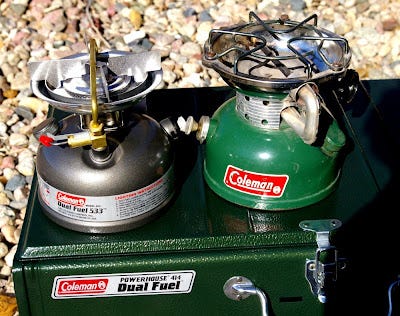COLEMAN SPORTSTER POWERHOUSE DUAL FUEL STOVES REVIEW
COLEMAN SPORTSTER AND POWERHOUSE DUAL FUEL STOVES REVIEW

As I was growing up, Pa Pandemic apparently had an aversion to the concept of a hotel and instead we filled the frequent KOA camper punch cards quickly as we toured and I was dragged around the country on “vacations”. During our sunny, hot, humid, cold, rainy, tornadic, and otherwise semi/non-hospi…
Keep reading with a 7-day free trial
Subscribe to Major Pandemic - MajorPandemic.com to keep reading this post and get 7 days of free access to the full post archives.


